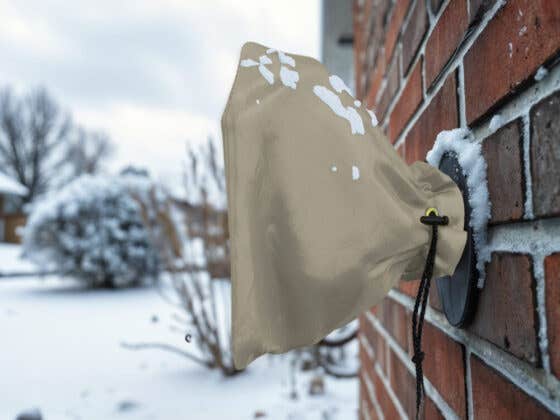Ever noticed those small but mighty little rings reinforcing holes in fabric or leather? Those are grommets. They may not seem like much at first glance, but they play a crucial role in making sure your project is durable, looks clean, and stays efficient. Whether you’re working on a DIY craft, fixing up outdoor gear, or completing an industrial project, choosing the right grommet can make all the difference.
In this blog, we’ll walk you through the different types of grommets, where they’re used, and how to choose the perfect size and material for your specific project.
Types of Grommets
There are different types of grommets based on their material, shape, and purpose. Here are the most common types:
Metal Grommets

Metal grommets are perhaps the most durable and commonly used type. They are available in different metals, including brass, aluminum, and stainless steel. These grommets are used in applications like heavy-duty tarps, outdoor covers, industrial fabrics, shoes etc. Metal grommets are corrosion-resistant, which makes them ideal for outdoor use. They come in different metals including:
Plastic Grommets
Plastic grommets are lightweight and affordable, often used for lighter-duty applications. They can be found in a variety of colors and are frequently used in decorative applications like curtains, crafts, and small clothing items.
Rubber Grommets
Rubber grommets are primarily used for electrical applications due to their insulating properties. They are ideal for protecting cables, wires, and tubes from sharp edges and preventing them from chafing or being damaged.
Self-Piercing Grommets
Self-piercing grommets are designed to cut through fabric or other materials without the need for a separate hole punch. This makes them highly efficient for projects that require multiple grommets, such as large-scale canvas tarp or banner installations. They are often made of metal and are ideal for heavy-duty applications.
Eyelets
Technically, eyelets are a type of grommet, though they are smaller and more delicate. Eyelets are commonly used in crafting, clothing, and footwear to reinforce holes through which cords or laces are threaded.
Applications of Grommets
Grommets are versatile and have a range of uses across various industries. Here are some common applications:
- Tarps and Covers: Grommets are essential in reinforcing the edges of tarps and covers. Heavy-duty grommets for tarps are typically made from rust-resistant materials to withstand harsh weather conditions. By distributing the stress evenly across the material, grommets help keep the tarp or cover securely in place. Their strength and reliability are key to maximizing the lifespan of all types of tarps including mesh tarps, poly tarps etc.
- Banners and Signage: Large banners and signs require grommets to ensure they remain in place when displayed outdoors. Metal grommets are typically used to prevent the fabric from fraying, while plastic grommets may be used in indoor environments.
- Clothing and Footwear: Grommets are used in shoes, jackets, and belts to reinforce holes where laces or cords pass through. Eyelets, a smaller version of grommets, are especially popular in fashion.
- Accessories: Grommets are commonly used in handbags, backpacks, storage bags and other accessories to enhance both functionality and style. Grommets reinforce areas where straps or handles are attached, making the bags sturdier for carrying heavy loads.
- Electrical Projects: Rubber and nylon grommets are used to protect cables and wires from wear and tear in electrical projects. They prevent sharp edges from damaging the insulation of the wires, reducing the risk of electrical malfunctions.
- Marine and Automotive: In marine and automotive settings, grommets play a vital role in reinforcing covers, tarps, and other fabric components that are exposed to water, sunlight, and extreme weather conditions. Stainless steel or brass grommets are ideal for such applications because of their corrosion-resistant properties.
How to Choose the Right Grommet
Choosing the best grommet for fabrics involves considering several factors including the material, size, and the environment in which it will be used. Here’s how to make the right choice:
Material Selection
If you’re working on a heavy-duty project that will be exposed to the elements, such as tarps, banners, or outdoor covers, metal grommets are your best bet. They provide superior strength and corrosion resistance.
For lightweight or decorative projects that won’t face much wear and tear, plastic grommets may suffice. They are also ideal for projects where color coordination is important. While, for electrical, automotive, or machinery applications, rubber grommets offer the protection and insulation needed to prevent damage to wires and cables.
Size Matters
Choosing the correct grommet size is essential to ensuring a secure fit and preventing material from tearing. Grommets are sized by both the inside diameter and the outside diameter. Measure the thickness of the material and the size of the hole before selecting a grommet. For lightweight fabrics like clothing or banners, smaller grommets are appropriate.
For heavy-duty applications, such as square or round tarps or industrial covers, larger grommets that can accommodate thicker ropes or bungee cords are required. Use this grommet size guide to ensure that the grommet fits properly and prevents tearing.
Consider the Environment
The environment in which the grommets will be used also plays a crucial role in your selection. Outdoor projects require grommets that can withstand moisture, UV light, and temperature fluctuations. Brass, stainless steel, and rubber grommets are excellent choices for outdoor use.
Indoor applications, on the other hand, may allow for more flexibility in material selection, with plastic or aluminum being suitable options.
How to Install Grommets Effectively?
Here are some easy grommet installation tips to ensure a tear-resistant fit:
- Mark the desired spot for the grommet.
- Use a punch tool to make a clean hole, slightly smaller than the grommet’s inside diameter.
- Insert the grommet into the hole and place the washer on the reverse side.
- Use a grommet setter and hammer or a grommet press to crimp the grommet securely.
- Ensure the grommet is tightly fitted to prevent loosening and ensure durability.
Conclusion
Grommets may be small, but they play a crucial role in ensuring the durability and functionality of many projects. Whether you’re working on outdoor tarps, crafting banners, or insulating electrical wiring, selecting the right grommet in terms of material, size, and type will enhance the effectiveness of your project. By understanding the different types of grommets and their applications, you can confidently choose the best option to meet your needs and create a long-lasting result.

















Recent Comments